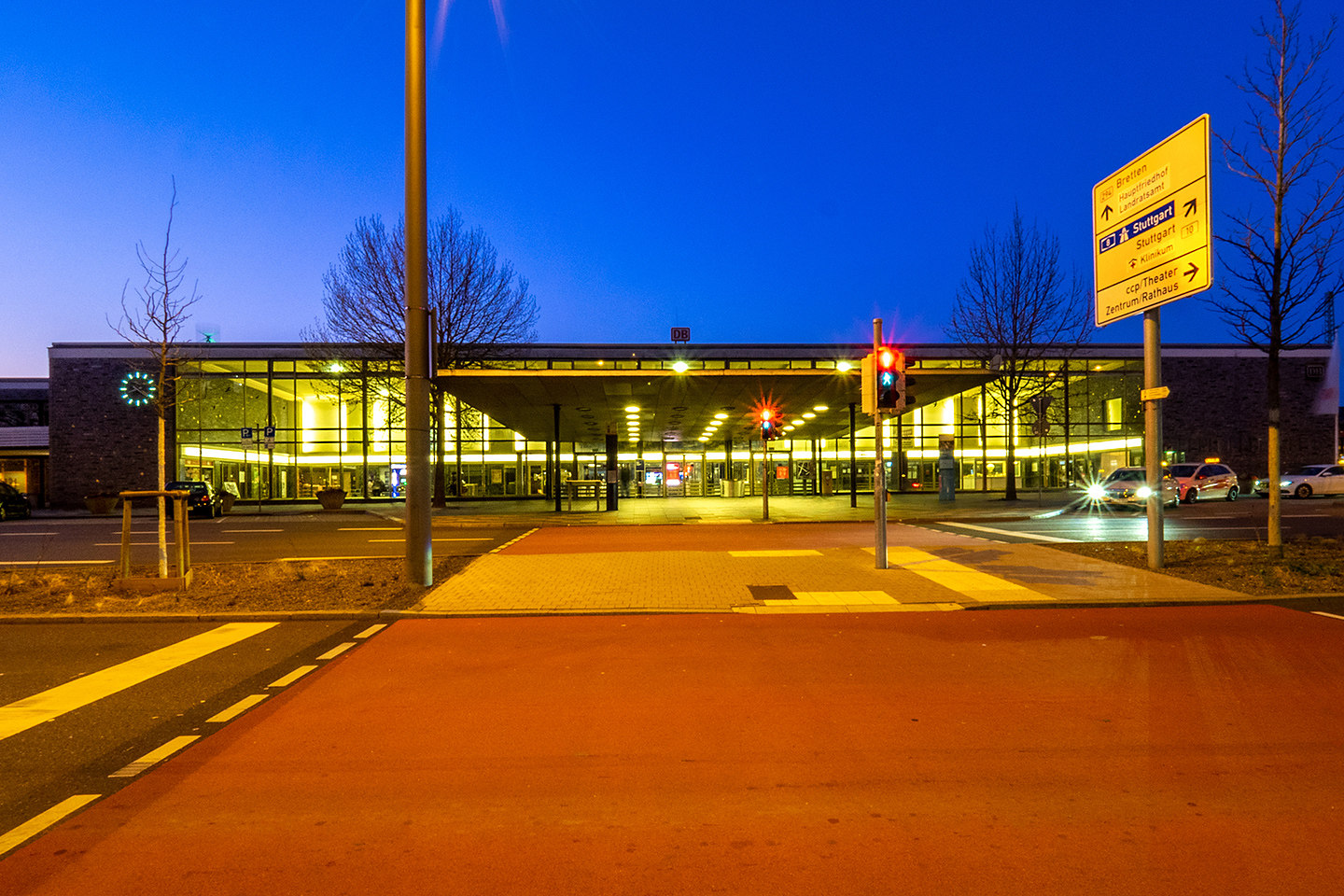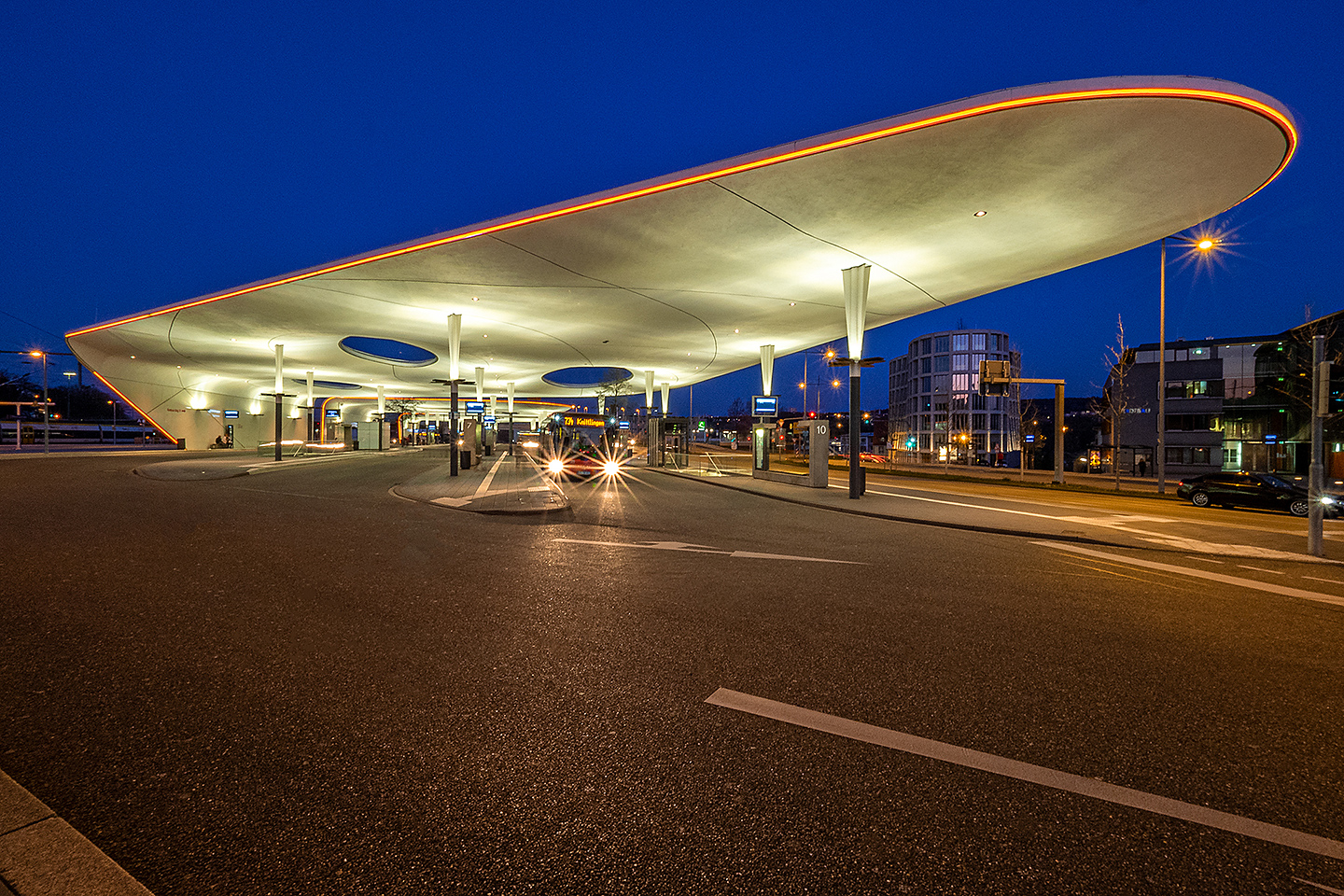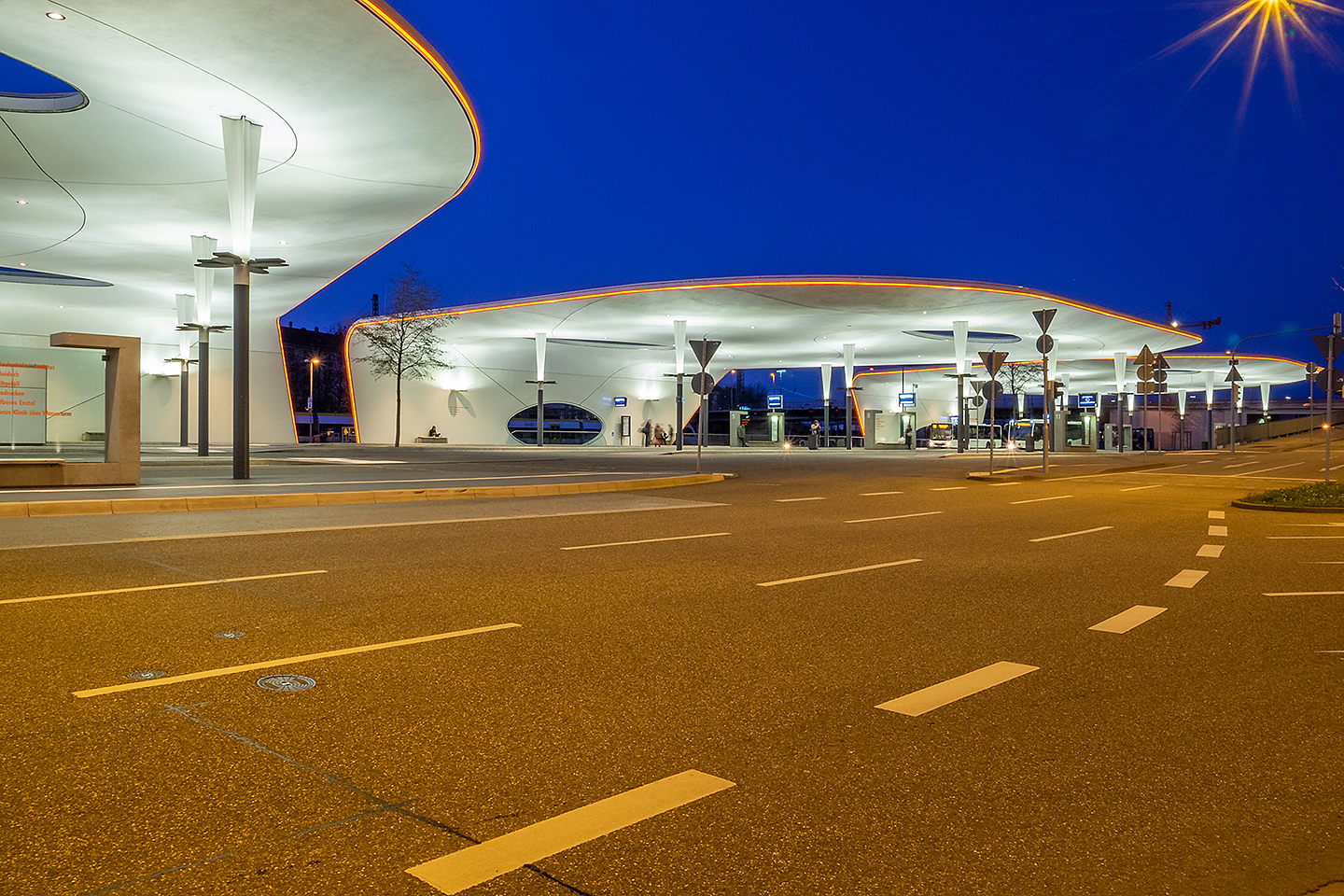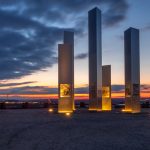Pforzheim Main Station – A Railway Hub between Progress, Destruction, and New Beginnings
Pforzheim Main Station – A Railway Hub between Progress, Destruction, and New Beginnings
When you stand at Pforzheim’s main station today, the building appears functional, plain, almost inconspicuous. Yet behind this sober façade lies a turbulent history – a history closely tied to the rise, the devastating fall, and the rebuilding of the city. Pforzheim’s station was once a symbol of progress, then a victim of war – and finally a place of new beginnings.



The First Station: A Gateway to the World
As early as 1861, Pforzheim’s first station was opened. At that time, the city was on its way to becoming a major industrial center, especially for jewelry, watches, and metal goods. The new station connected Pforzheim to the wider world – first via the Westbahn (Karlsruhe–Mühlacker), later also through the Nagold Valley Railway to Horb and the Enz Valley Railway to Bad Wildbad. It was not only a logistical hub for raw materials and finished products but also a gateway for merchants, travelers, and businesspeople.
For the flourishing jewelry industry, the station became a central hub. Representatives traveled from here to sell their collections around the world. At the same time, buyers flocked to Pforzheim to purchase directly from the manufacturers – the proximity to the station was a major advantage for many companies.
The Magnificent Reception Building
The historic station was more than a transport facility – it was a proud showcase of the city. The old reception building, built in neoclassical style, was considered one of the most beautiful in Baden. High halls, ornate façades, and spacious platforms conveyed a sense of importance and cosmopolitan flair. For many, the station was the first image of Pforzheim – and the last they carried with them when leaving.
Destruction during World War II
This image changed abruptly on the night of February 23, 1945, when Pforzheim was almost completely destroyed within 20 minutes. As a logistical hub, the station was one of the main targets of the British bombers. It was nearly obliterated. Only rubble remained of the once splendid building. Tracks, halls, engine sheds – everything lay in ruins.
With the station, a central symbol of Pforzheim’s identity also fell. The city was, in the truest sense, cut off from the rest of the world – infrastructurally, economically, and emotionally. For many survivors, the destroyed station marked the end of their old lives.Together with the adjoining ZOB, the station remains the city’s beating transport heart – and continues to tell stories deeply etched into Pforzheim’s collective memory.
Reconstruction: Practicality instead of Splendor
After the war, the arduous rebuilding began. In the 1950s, a new reception building was erected – this time functional, modern, reduced. The new station reflected the spirit of the time: sober, pragmatic, efficiency-oriented. Nothing remained of the earlier grandeur – but the city was reconnected. The new station stood for a new beginning, even if it never truly won the hearts of the people of Pforzheim.

The Central Bus Station – An Everyday Hub
Directly in front of the station building lies today’s central bus station (ZOB). It is the hub of urban and regional public transport – every day, thousands of commuters, students, and travelers get on and off here. Where once stagecoaches stopped, buses now run on a regular schedule – modern mobility meets historic routes.
The ZOB is not only functional but also a microcosm of Pforzheim’s daily life: people rushing to work, teenagers waiting for their bus, older residents picking up a coffee at the kiosk. Architecturally, too, the area around the ZOB offers interesting perspectives: the canopies over the stops, the lines of the roadways, the interplay of light and shadow over the course of the day.
The Station Today – Change in Stillness
Today, Pforzheim’s main station is an everyday place: commuters board and disembark, students wait for the regional train, tourists buy tickets. Many pass by the concrete façades without a second thought – unaware of the historic ground beneath their feet. Pforzheim’s main station is not a place that imposes itself at first glance. But those who engage with its story realize: here, the history of the city is concentrated as if under a magnifying glass. Rise, destruction, and new beginnings – all lie close together here. Together with the adjoining ZOB, the station remains the city’s beating transport heart – and continues to tell stories deeply etched into Pforzheim’s collective memory.
Comments are closed.


